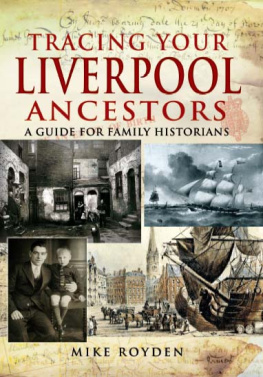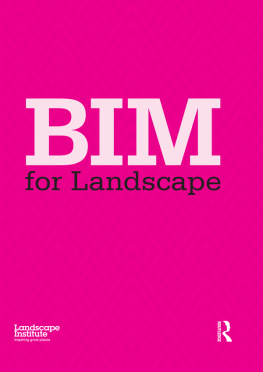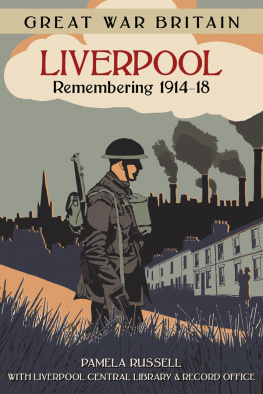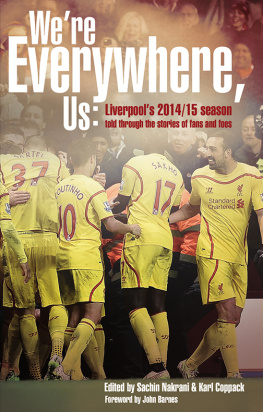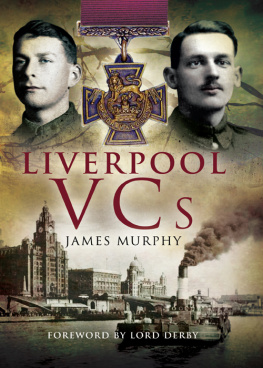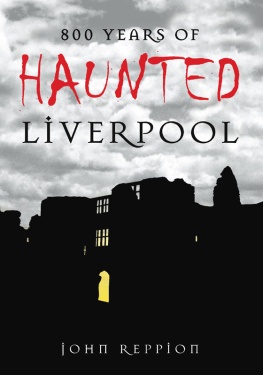To Mum and Dad, and my brother Stephen,who have encouraged me every step of the way. To my wife, Sue, for her love and support in everything at which I try my hand. And to the memory of Mr Dewsnap, the best history teacher, bar none.
CONTENTS
Although theres only one name on the front of this book, a project such as this is more than the work of just one person. There are many who have inspired, advised and otherwise helped me with my writing.
Firstly, for their help in digging photographs from their archives and for their kind permission to reproduce them here, my thanks go to Roger Hull and the Liverpool Record Office and the staff at the National Monuments Record in Swindon (now the English Heritage Archive). Id also like to thank Dave McAleavy, for permission to reproduce the amazing photo of some of the Formby footprints. For permission to use photos from their archives and from existing publications, my thanks to Jeff Speakman, Rob Philpott and Ron Cowell of the National Museums Liverpool Field Archaeology team, and Dave Roberts of the Merseyside Archaeological Society.
A great big thank you must be given to my family: Mum and Dad who greatly assisted on trips around Liverpool, and held umbrellas while I took the photographs for this book (all photographs, unless otherwise stated, are mine), and my wife Sue who created the fantastic line drawings and maps throughout, and proof-read everything from the very early stages.
Thanks to the staff at The History Press the editorial staff of Michelle Tilling, Emily Locke and Ruth Boyes, and the countless others who brought this book to fruition.
Thanks must also go to all those who Ive met in the many years since I started on my historic and archaeological career. Theyve been crucial in keeping up my enthusiasm, as have all those whove discussed and commented on my websites Historic Liverpool (http://historic-liverpool.co.uk) and Liverpool Landscapes (http://liverpool-landscapes.net) alongside the related Facebook and Twitter pages.
Of course, all mistakes herein are solely my responsibility.
WHAT IS THE LANDSCAPE?
This book is all about Liverpools historic landscape. But it does more than simply discuss the history of the ground on which the city was built. The natural landscape shaped the history of Merseyside long before Liverpool was founded in 1207. The rivers, bogs, hills and valleys dictated where people could settle, and so affected the emerging politics from prehistory into the medieval period. Many of King Johns reasons for establishing a new town on the north-west coast were related to the landscapes suitability for a sheltered harbour and a castle, as well as proximity to Ireland.
But even in the more modern age, when we think we are in command of nature, the development of the city depends on what has gone before. Old buildings need to come down before new ones can be built in their place. New motorways must cut through existing landscapes. Decisions on planning not only depend on where something needs to go, but also what is there right now. And decisions made about construction now will in turn affect future developments. We are perhaps only now coming to realise that our actions have repercussions for our descendents.
Therefore, this book is not just about the unwinding story of Liverpool and Merseyside, but also about the constant process of reinvention which the city has undergone and must continue to go through to develop and adapt to new circumstances. It tries to reveal why buildings were put where they still stand today, why roads simply peter out on the outskirts or why some shops seem half-buried in the pavement (read about the semi-basements in Chapter 5).
If this book succeeds in its aims, you will see Liverpool in a new light, or at least look at it with an eye for more detail than you did before. When you are next out in the city, look up above the shop fronts to understand the history of the road you are in. When an old wall remains in a new housing estate, follow it to see if its line gives clues as to its original use. Old maps are a great source for this kind of investigation and many are used throughout this volume. The photos Ive taken for other illustrations go to show how much of this fossilised history remains for the observant passer-by.
Even though there are dozens of interesting books out there covering Liverpools history, this one differs in that it deals with the history of Liverpool itself, and the city more than the events which played out within it. Of course, it is difficult to write about the buildings, institutions and architectural innovations without mentioning the women and men who were involved, but they take a back seat to descriptions of why Liverpool looks the way it does, why it exists at all, and what was here before it. Because of this, the book can cover much older periods of time; periods for which our only way of investigating is to pull together the scattered clues from archaeological excavation, map analysis, and a little bit of geography, to show what it was like to live in the Merseyside landscape before Liverpool even existed.
The earliest chapters begin in a time when the land itself was being formed, when the bedrock was laid down before being sculpted by Ice Age glaciers. The story continues with the arrival of the first human communities, who left only scant traces in the landscape. These people seemed to look more intently towards their Irish and Atlantic European neighbours to the sea more than they did inland.
Later these isles were inhabited by British, Roman, Norse, German and Norman peoples, who added their own layers of history to the landscape, to mingle with those that came before. The landscape of south Lancashire (as it would become) was crucial to the way the medieval manors and farms developed. This is true on both a local and a national scale, and would continue to be so up to and beyond the time King John decided to create a borough here in 1207. When Liverpool was created, the location, the geography and the political situation of the area was crucial to Johns choice to place his new town on the banks of the Mersey. Although this was a new town, the landscape was by no means empty: there were farms, manor houses, a castle and power base in West Derby.
This is still an age when most of what we know of Liverpool comes from silent witnesses: archaeological objects and investigations. But, from the time when Liverpool grew in stature from a tiny fishing village into a bustling Tudor town in the sixteenth century, many more resources are available to tell us about this burgeoning urban area. This book will take you through the centuries when Liverpool first came into its own as a port, and became embroiled in the Civil War as a strategic objective. By this time Liverpool was starting to see itself on a par with the other great provincial towns of England: Bath, Ipswich, Bristol and Chester. Its ambitions grew and its landscape reflects these developments, with buildings, roads and fashionable squares aping those of London, Edinburgh and elsewhere. By 1800 Liverpool was a smart town attracting entrepreneurial businessmen, but on the horizon were the revolutionary changes which were sweeping Britain and the world.
Having developed into a port, and staked its future on pioneering wet dock technology, Liverpool suddenly found itself, during the Industrial Revolution, on the doorstep of the great manufacturing districts of northern England, on the main trade route to Europe and the Americas. Once again, geography landscape was on Liverpools side, and it took advantage. By 1900 Liverpool was at the height of its powers the biggest port outside London and faced proudly across the Atlantic at her American cousins to whom she shipped countless souls from Ireland and elsewhere, and untold tonnes of cargo.
Next page


